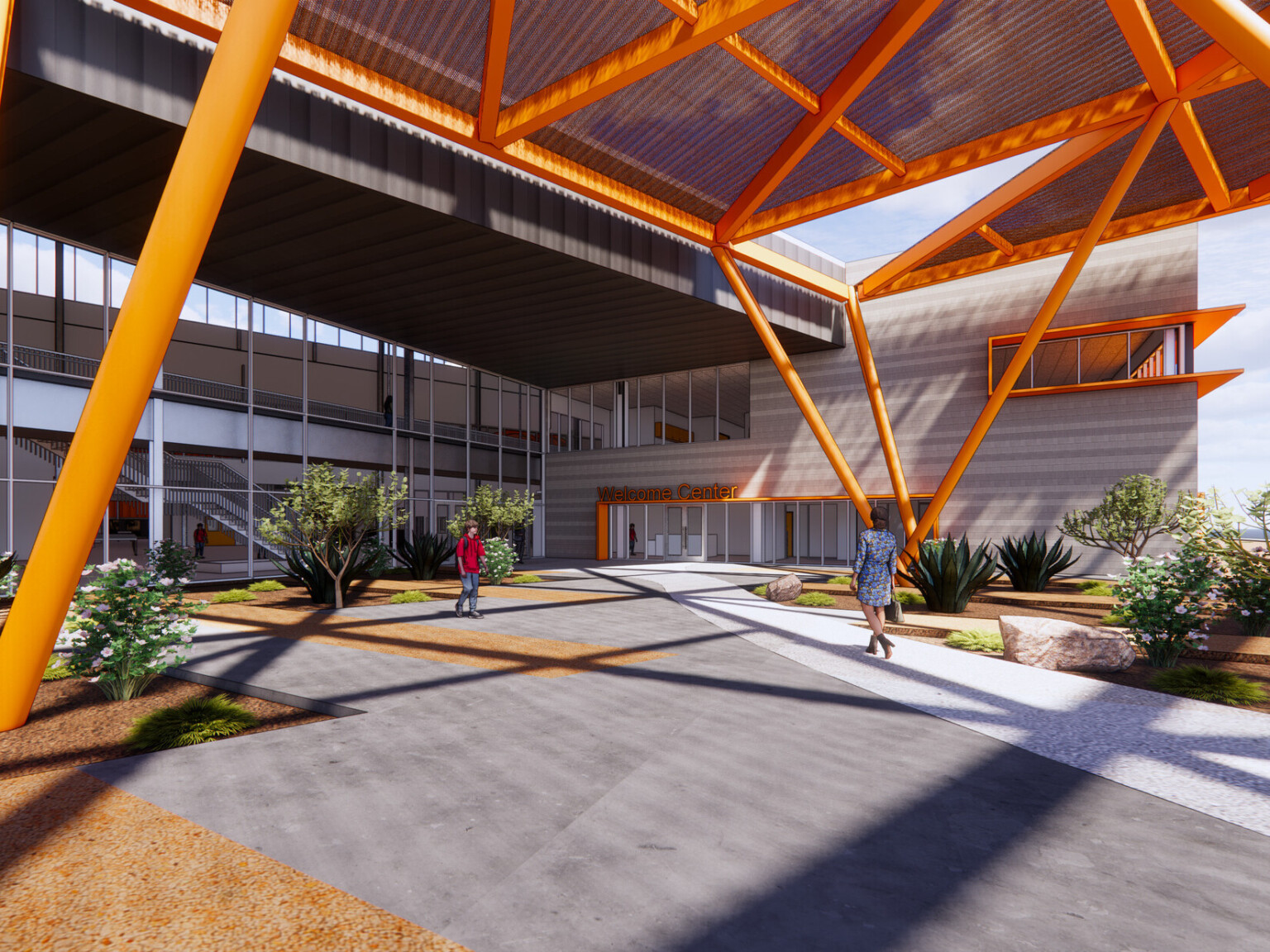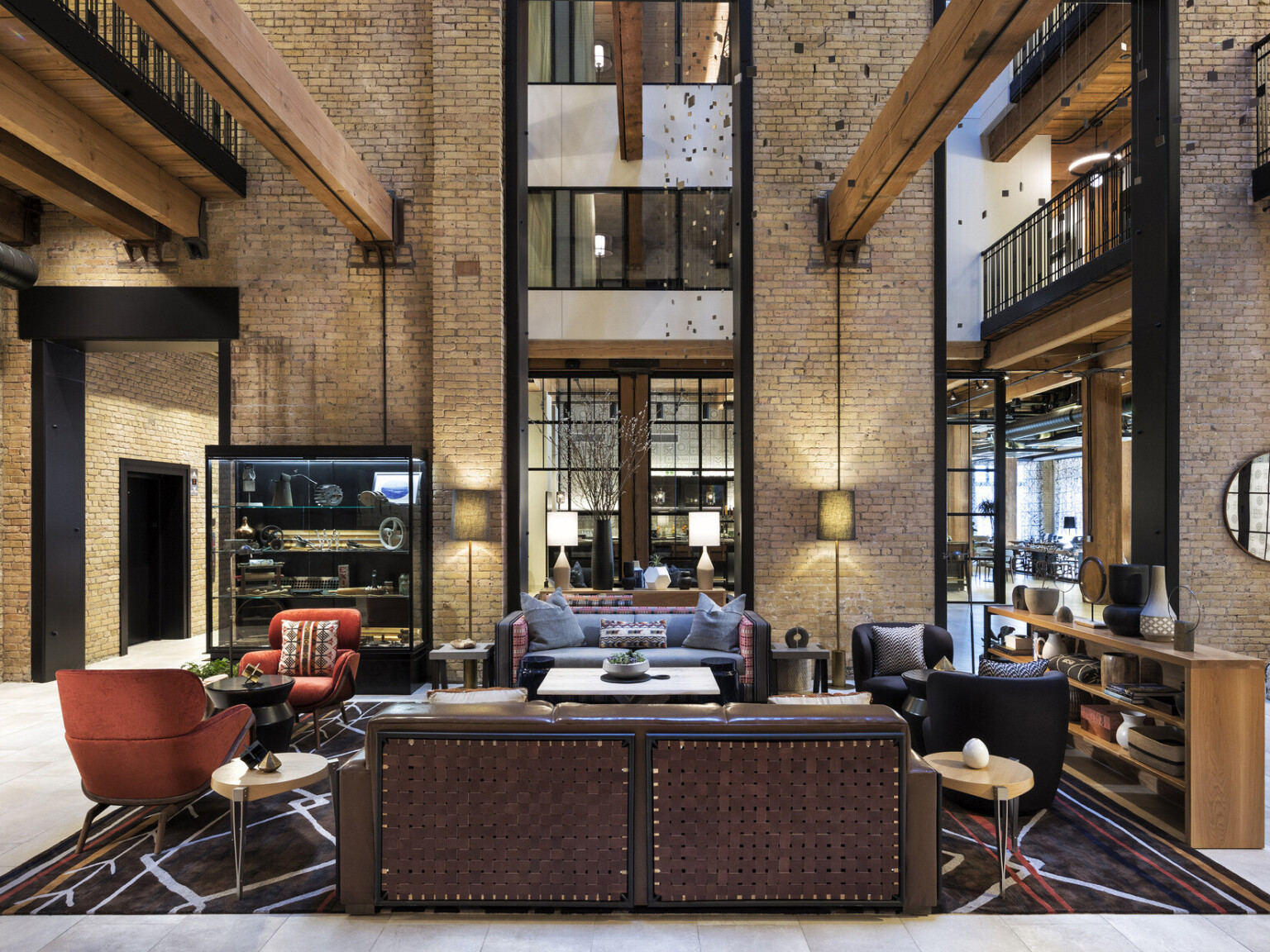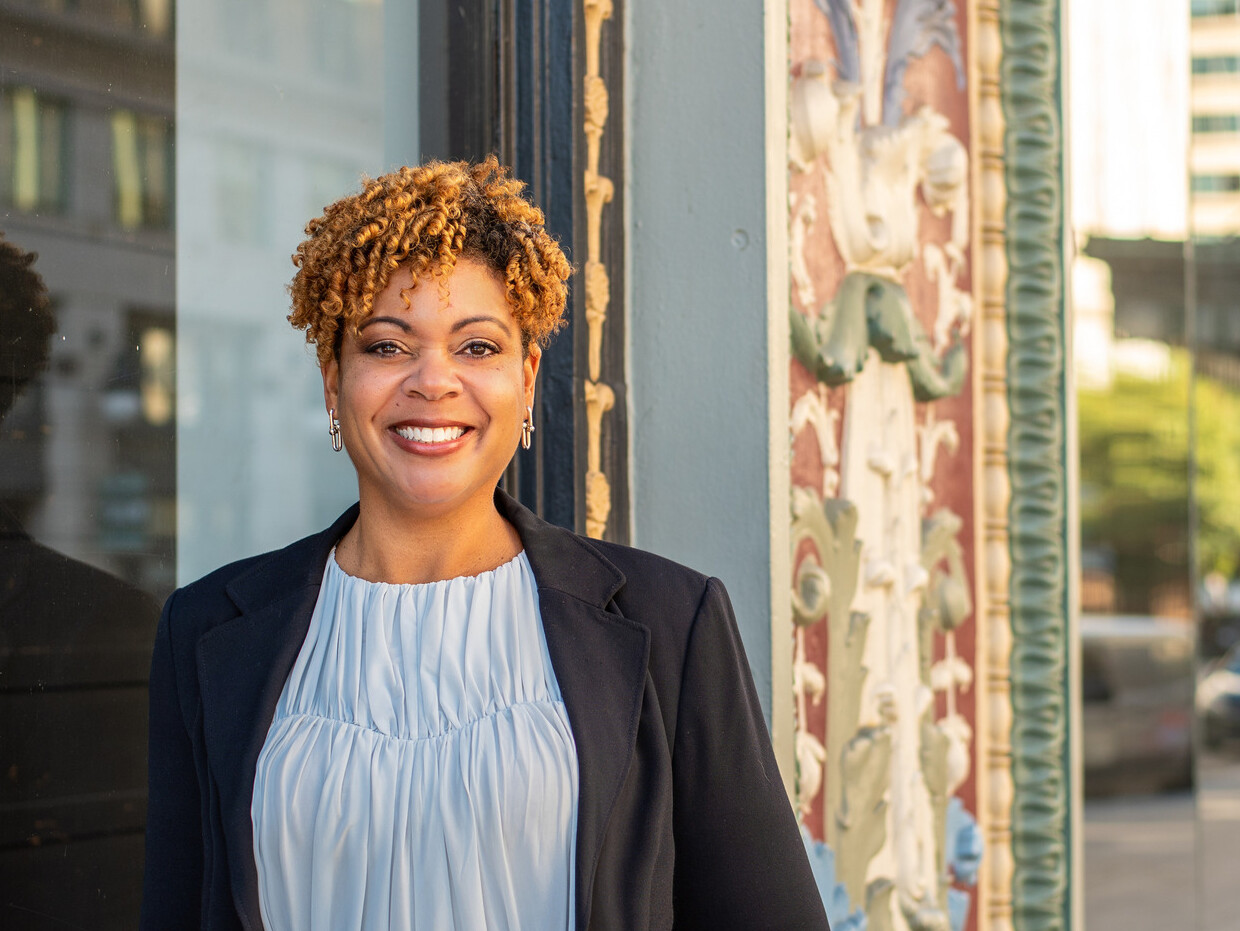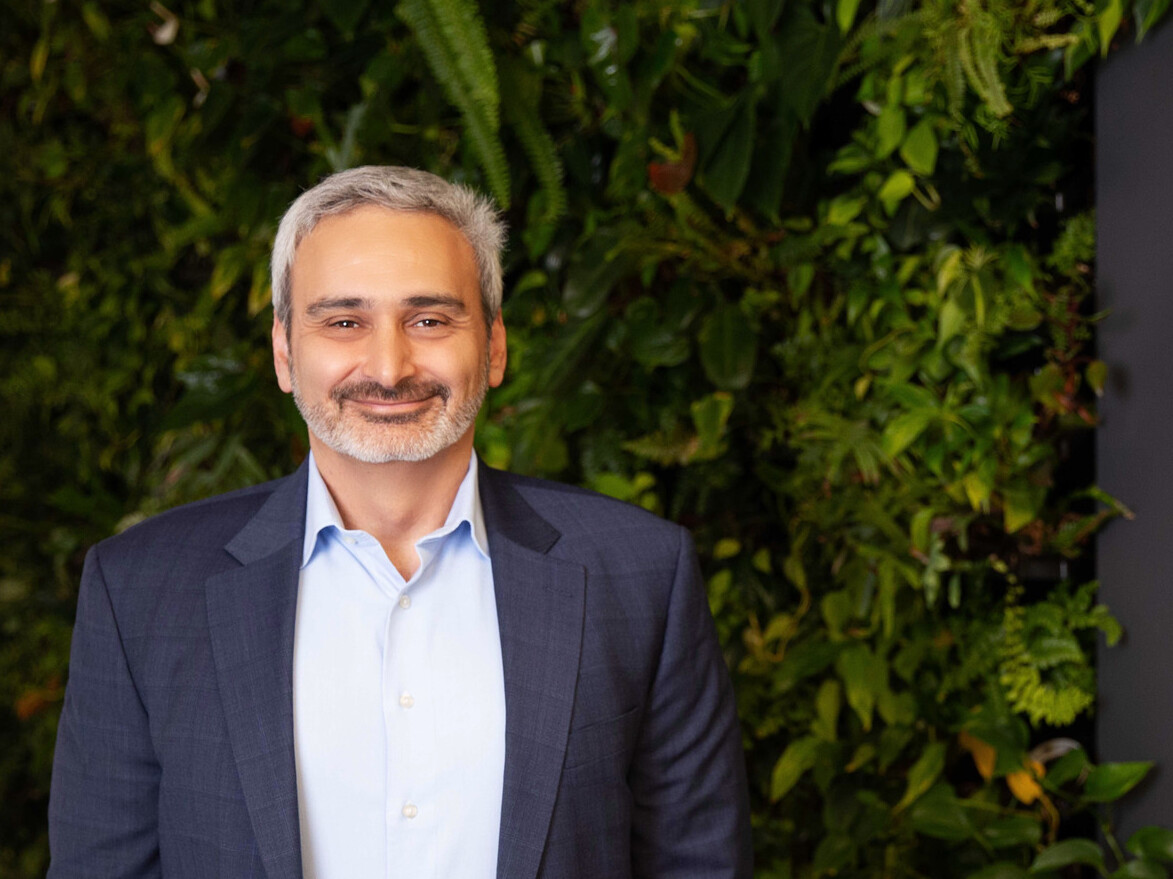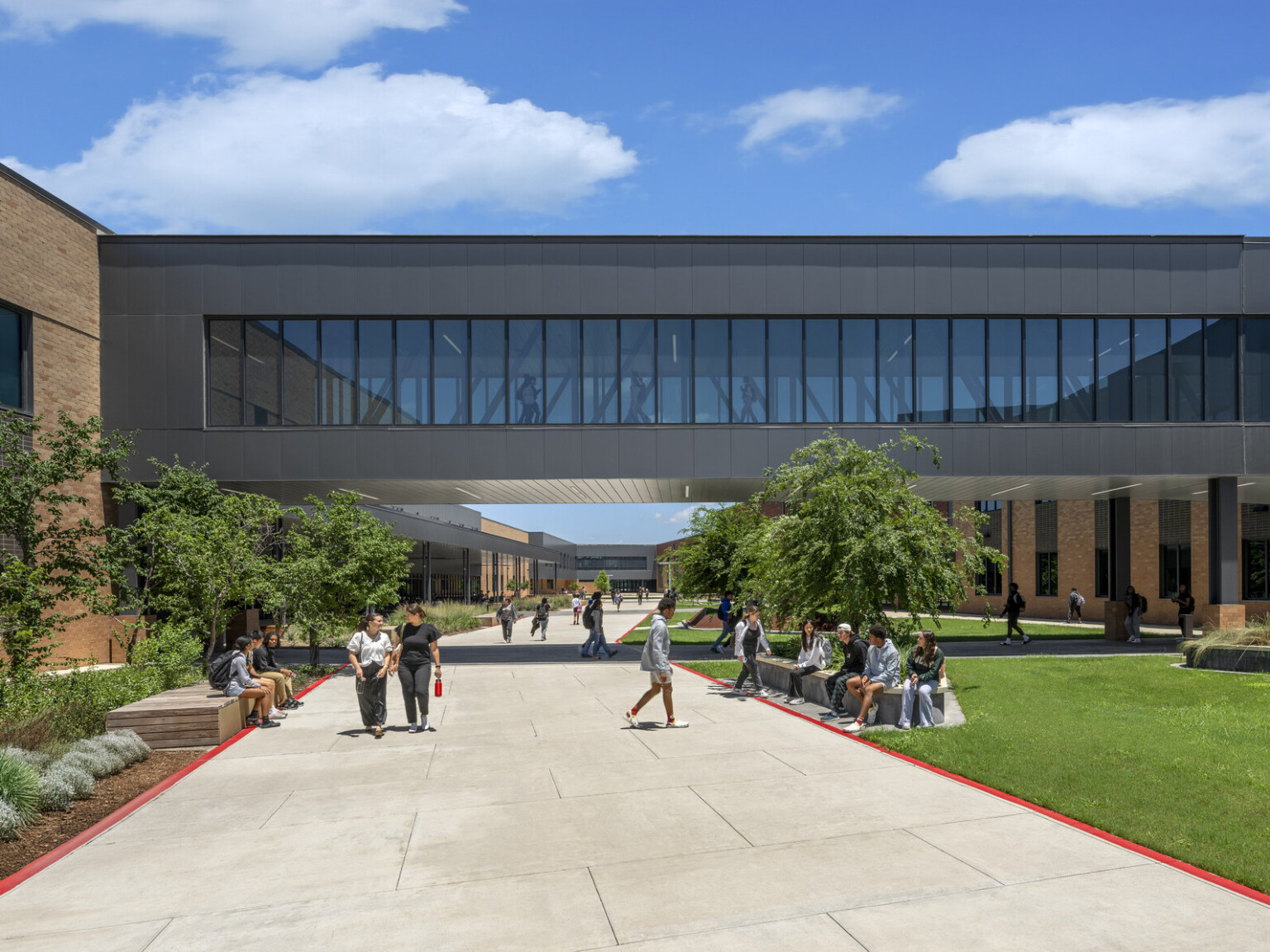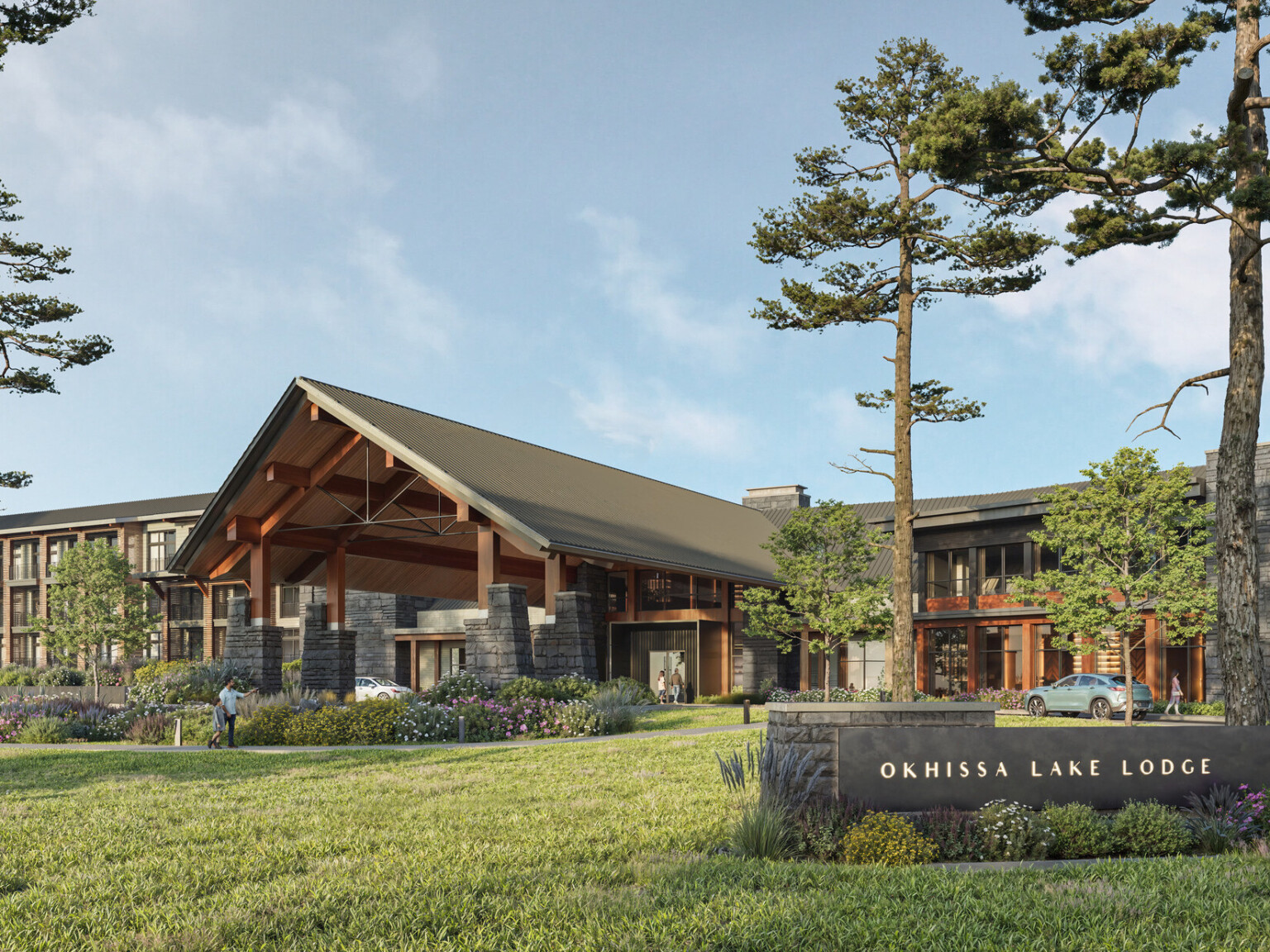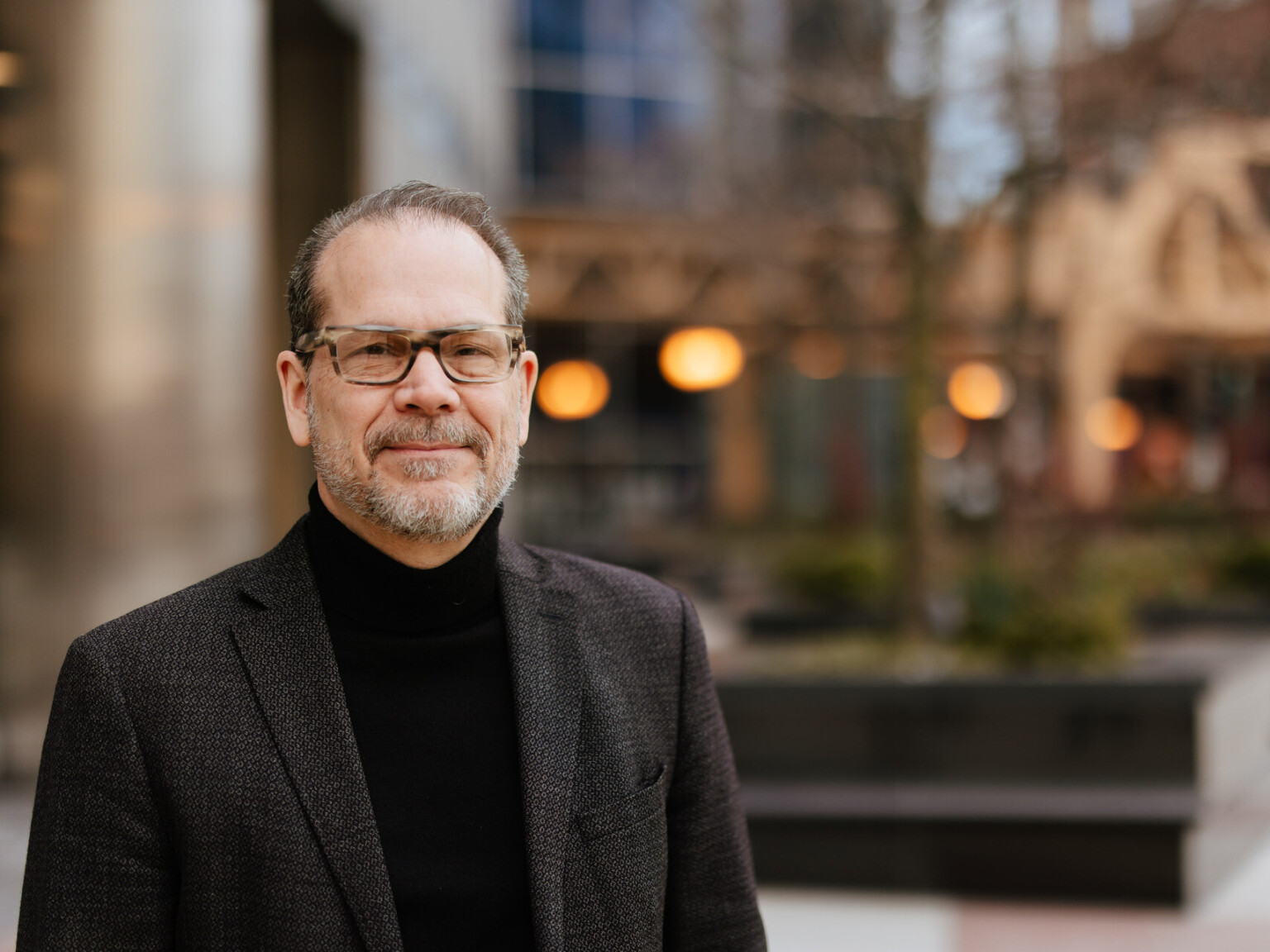
DLR Group Uncovers Missed Opportunities for Higher Education
(DENVER, February 19, 2025) – DLR Group, a leading global integrated design firm focused on elevating the human experience through design, has launched the fifth phase of its Evolution of Campus (EOC) research initiative designed to engage with and inspire college and university leaders to plan effectively for the future. EOC research participants span 240 institutions, representing over 6.5 million students. In EOC 5.0, DLR Group explores the opportunities and challenges of leveraging AI to support sustainability in the built environment and recommends solutions for the smart campus of the future.
AI has entered common discourse and dramatically impacted technology interaction. This emerging technology will affect higher education institutions and design firms alike, presenting both benefits and obstacles to navigate.
DEFINE: AI IN THE BUILT ENVIRONMENT
DLR Group first set out to define a shared understanding of AI in the context of the built environment. Initial conversations with institutions uncovered a general lack of understanding surrounding AI, particularly as it relates to vast quantities of building and operational data.
DLR Group’s research established a working definition of AI as the application of advanced algorithms and machine learning to analyze data, identify patterns, and make decisions with minimal human intervention. In the built environment, AI is predictive and proactive, serving as a tool for operational efficiency, empowering humans to act and make economic decisions and support sustainability goals.
RESEARCH PROCESS
During an eight-month process in 2024, DLR Group conducted interviews to determine existing opportunities and challenges surrounding AI and its influence on campus sustainability goals. DLR Group sought a diverse range of participants, public and private, to create a balanced representation across campuses and different climates where sustainability goals vary. The firm interviewed leaders from across the country, including campus administrators, facilities staff, and faculty.
EOC 5.0 participants informed DLR Group that the students are often driving campus sustainability initiatives. Higher education institutes understand their responsibility to ensure students have inspiring tools to develop and hone skills for the future and the spaces they learn in should be held to the same high standards.
RESEARCH OUTCOMES
DLR Group’s EOC 5.0 research shows that most higher education institutions collect data from traditional building systems, but far fewer use AI-based systems to analyze this data, automate processes, and make decisions. The smart campus of the future will integrate AI, Internet of Things (IoT), building sensor data, and other advanced technology.
Three Key Themes Emerged:
- Driving Leadership and Cultural Alignment
AI can provide actionable insights and predictive analytics to equip leaders with data-driven strategies for sustainability. By showcasing measurable progress, AI can align leadership, students, and other campus stakeholders around shared goals and a forward-looking vision. - Optimizing Facilities Operations
AI can hone building systems building systems, streamline resource allocation, and enhance operational efficiency. Predictive maintenance and automated controls can reduce downtime, cut costs, and improve sustainability metrics by ensuring that facilities operate at peak performance. - The Future of AI for Campus and Scenario Planning
AI can help bridge the gap between historic campus environments and modern sustainability demands. As institutions seek to upgrade campus buildings, AI can identify priority areas and predict challenges while preserving historic campus character.
EOC 5.0 recognizes that while there is growing excitement surrounding using AI to improve campus life, there is still some confusion about the best ways to implement this emerging technology. Surveyed institutions report they already gather data about building and activities happening across campus, so AI would enable key stakeholders to leverage existing data and processes into a more synthesized data set to identify trends that can inform decisions and take meaningful action. Currently, AI tools represent a missed opportunity for higher education campuses.
To pursue AI opportunities, higher education leadership adoption is critical. Students, leadership, and other key institutional stakeholders should align shared sustainability goals.
IMPLEMENTING AI INTO A MORE SUSTAINABLE CAMPUS
DLR Group hosted two town halls to present research and findings to EOC 5.0 participants. Attendees received a Smart Campus Integration Guide to uncover gaps in their campus environments and determine what tools will be needed to introduce new sustainable solutions. Using AI systems to improve efficiency, reduce resource use, and meet institutional sustainability goals – DLR Group’s Smart Campus Integration guide will help leadership make the smart campus transition.
DLR Group will make a Research Outcomes Report available to institutions to support their sustainable initiatives.
To access this guide and our comprehensive research findings, please contact DLR Group Senior Associate and Higher Education Leader Cory Clippinger.
EVOLUTION OF CAMPUS AT A GLANCE
When college campuses shuttered across the nation in 2020, DLR Group’s Higher Education team implemented a proven 360-degree engagement process to better understand the situation. What initially began as a listening exercise blossomed into a research initiative – one that the firm has implemented each year since. Previous research phases include:
- Evolution of Campus 1.0 – Pandemic Impact: Campus Vulnerabilities and Academic Workplace
Interviews and research completed during the early months of the pandemic shined a spotlight on vulnerabilities, putting institutions in a position to embrace systemic change. - Evolution of Campus 2.0 – Looking into the Future
Interviews and research conducted in summer and fall of 2020 revealed best practices for reopening campuses as institutions nationwide gradually resumed in-person activities and implement systematic online learning. - Evolution of Campus 3.0 – Diving into the Details: Resiliency, Flexibility, and Location
Primary research revealed best practices and offered insights on supporting science, technology, and research on campus; the future of sustainability and resiliency planning; and evolving space types and utilization. - Evolution of Campus 4.0 – Student Wellbeing and Engagement
Research on how campuses are utilizing the built environment to respond to a holistic, multi-dimensional approach to campus wellbeing. Findings revealed how campus is changing to meet the needs of today’s students. - Evolution of Campus 5.0 – AI Impacts
Research focused on how campuses are leveraging artificial intelligence.

